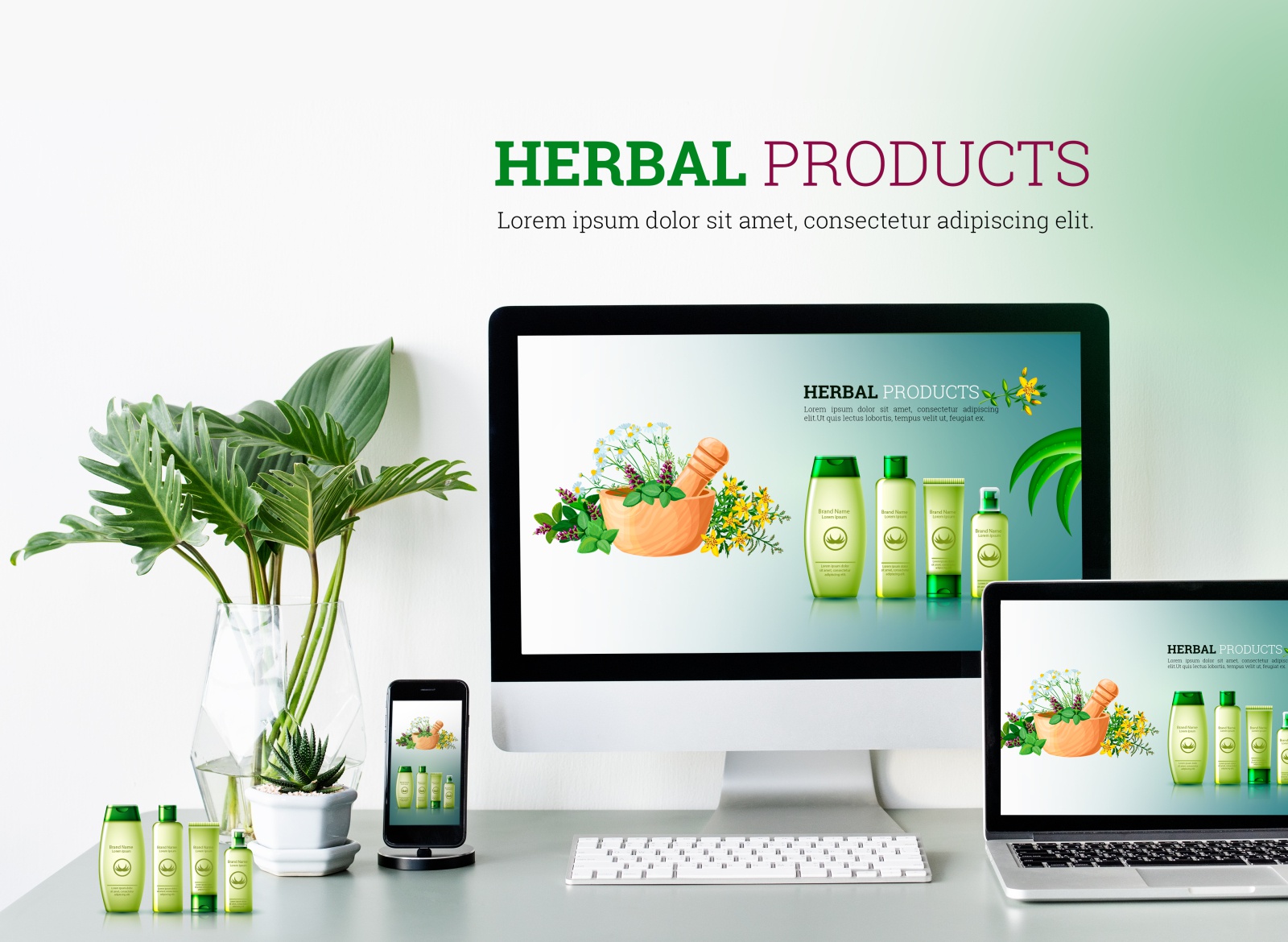introduction For Herbal Products
The industry of Herbal Products is booming. Herbal products have become a household name, and in modern society, the household is the first place a consumer stands to buy a product. From toothpaste to body lotion to pregnancy tests, Herbal Products are the latest craze. Their growing popularity has lead to people believing that they cannot be regulated by the government because of their natural origins. They are a victim of their own success, and a rise to fame that they did not create.
The market profile for Herbal Products is relatively small compared to other products. With hundreds of products on the market for sale they are still a realm of alternative medicine. Herbal Products can be used for a variety of medical conditions, natural treatments, and how they are marketed. They are a market that is being recognized worldwide.
There is a hidden aspect to Herbal products. Herbal products like teas are being aligned with health food, and managed with the same standards as dietary supplements. Herbals are not regulated because of their healing properties like vitamins and minerals. This is how they are allowed to be sold.
Converting this aspect of Herbal Products to a positive has created an unparalleled opportunity for Herbal Products marketers.
The Art of Marketing Herbal Products
Herbalism is an age old process of application of natural remedies in the field of Medicine to many of the illnesses that are part of modern society. Herbalism is a natural, universally accepted form of medicine, as opposed to allopathic medicine, which has many drawbacks and is mostly ineffectual. This means that the user of Herbal Products have the choice to use it as a remedy for their illness or as a health supplement to be used for their nutrition. The greatest advantage of Herbal Products is that the user has the ability to treat themselves with their own herbal product with the level of assistance which is appreciated by most users.
A marketer using Herbal Products can maintain his or her market presence with a solid method of bringing their product to light. It all starts with branding. The essence of Herbal Products marketing is branding. Branding is a method of creating a positive impression for a business. Branding can be physical or it can be a company’s style. Branding is a way of conveying a message about a product, service, or company.
Tactics For Herbal Products
When a marketer is creating a marketing campaign for Herbal Products, they should begin by creating a strong brand identity. One of the first factors to consider when creating the brand identity is the product’s appearance. Counterfeit brands are quite popular; however, the consumer can only be tricked by the scent or packaging.
It makes sense to give all of the possible concepts, uses and benefits to a brand identity to help create a positive image for the brand. Once this is done then the marketer can decide which product lines will be featured in the campaign.
It is also advisable to create a cohesive campaign based on the company’s product differentiation. The message will be simpler than with a generic product.
Makers of Herbal Products should include the following features in their brand identity:
- Product Name
- Brand Design
- Branding Shoot
- Sponsorship
- Brand Identity
- Usage
Creating A Strong Brand Identity
Counterfeit products are recognizable as they have different shapes; however, when branded correctly and packaged in an attractive, professional fashion, an herbal product is difficult to distinguish from its genuine counterpart. This is why branded herbal products are more likely to be purchased than counterfeit products.
The green symbol must have a clear purpose, so it is best to use a clear color. The color should not act so vivid that the consumer cannot tell the difference between what the brand is selling and what a genuine product is.
The green symbol should be used on the products, labels, packaging, and print collateral. The brand name and other branding should be used in the appropriate places. Generic representations are not used because they are unable to be profitable.
The most important elements are the educational graphics that are used in Herbal Products marketing campaigns. The graphics should be easy to see and not in the least bit distracting. If the graphic overlaps the green symbol, then that is a commercial.
In marketing Herbal Products, the display is one of the most critical components. The display must present the product in an attractive manner. It is a means of attracting potential customers.
The other area of use for display is the container. In today’s society, many Herbal Products are sold in containers that are closed at the top with an airtight seal. This is an effective way to protect the product from damage.
The word “Health” must be easy to read and always visible on the container. The label is also an area where the marketer must create a strong, easy to read message.
Many people need information on the product to embark on a wholesome use of the product and that is why someone is being attracted to the promotional literature of such marketer.
The marketing of such products is dependent not only on the products but also on its quality. Herbal products are manufactured legally, but the quality of the product must be of the best so as to make sure that consumers enjoy using the product.
Ogilvy and Matherson offered the following guidelines to Herbal Products marketers:
Every bit of the product should be synonymous with the brand. Use a color that your target consumers have noted in all your advertisements as usually coupled with either green or yellow.
Ogilvy and Matherson point out that the brand identity of Herbal Products must be used to elicit a positive emotional response. The emotional response can be a positive reaction which comes from the purchase of the Herbal Product. This emotional response could also be an attention-getting factor. The emotional response resulting from the product can be a connection with the product. This can happen through the understanding of the product and/or the development of trust. Additionally, the emotional response can be a nod to belief in the product.
It is also advised that the brand identity of Herbal Products should have a positive association with the product. The use of the green symbol is one way to create a positive response. The sense of harmony can also be created by using the color schemes frequently. For example, throw the colors of both green and orange to the same color schemes. This is done in order to create a sense of unity in the Herbal Products marketer. A sense of harmony can also be seen in the use of polar active colors.
The marketer of Herbal Products must be able to understand its consumers. The marketer should have a thorough understanding of the consumer to understand how he uses the Herbal Product. This is the primary reason why the marketer must create the brand identity associating the product to a strong, positive emotional response.
Struggling for an easygoing lifestyle with health risks can be tackled with the use of a Herbal Product. The marketer must consider both the physical and the mental health of the consumer to customize the product to suit the consumer’s needs.
The marketer of Herbal Products must consider the benefits of each Herbal Product that they offer. This can be done through extensive researching.
The Herbal Products marketer should also have knowledge of all the Herbal Products that are being used by the public. The marketer must know how he can customize the product to meet the demands of the consumer.
It is crucial for the marketer to research thoroughly on the Herbal Products and include the following benefits:
- Cost-effective adjuvant for the holistic health care system
- Symbolic values and emotional benefits
- Proven-effective circulation methods
The marketer must ensure that the Herbal Product that he uses is known for its safety. The marketer must ensure that there are no health hazards associated with the Herbal Product. A marketer must be able to write as many reviews as possible on the products that he is launching.
The Herbal Products marketer should ensure that none of the Herbal Products that they sell is made from chemical fertilizers. The marketer can do this by exercising excellent controls to provide assurance on the quality of products.
The Herbal Product marketer must ensure that the benefits promoted on the package are conveyed to the marketer’s audience. The marketer must ensure that whatever branding is used is used in a way that is appealing and exciting in many different ways.
The marketer of Herbal Products must also work closely with the advertising agency to help develop the campaign to attract the audience. The campaign must be suitable for most of the Herbal Products marketer’s consumers.
The Herbal Products marketer should create a campaign that is based on the brand identity and the color scheme. The Herbal Product marketer should always choose colors that evoke a response of delight, anger, or dominance. The colors should be unified, because colors are used all over the world.
The Herbal Products marketer must balance the ingredients of the product with the method of consumption. This can be achieved by using the right combinations of the ingredients and not overloading the consumer with the ingredients in order to create relaxation. It is important to use the ingredients in the right combinations to have a positive response from the customers.
The Herbal Product is not a new concept and the marketer must not confuse Herbal Product use for that of herbs, because many Herbal Products are formulated to emulate the benefits of the herbs.
The Herbal Product marketer should create an introductory philosophy that educates the consumer on both the holistic and physical health benefits that are available. The marketer must further educate the consumer on the safety features of the product and the components that are used.
The consumer must not be under the impression that the Herbal Product is perfect for all problems. The marketer must focus on the positive uses of herbs and their benefits. The marketer must also focus on the beneficial effect the herbs have upon the mind as well as the body. The marketer must further educate the consumer about how the body and mind use the herbs.
The marketer must consult closely with the advertisers to help make the Herbal Products campaign successful. The marketer must make sure that the campaign has a strong display component. The marketer must make sure that the display is geared to attract attention of the consumers. The marketer must also make sure that the message is loud and clear so that the targeted group of consumers is lured into making the product purchase.
The Herbal Product marketer must also offer discounts on the purchase of the product to entice more people into purchasing the product. The marketer might also offer large discounts during the months that are most likely to produce sales.
The marketer must create a vision statement that will fit the Herbal Product and the market that the marketer is going after. The marketer must also create a mission statement that communicates the Herbal Products message to the marketer’s consumers. The Herbal Products marketer must consider the image build that the Herbal Products campaign creates.
The economic performance of the Herbal Products marketer should be judged on one aspect of the product, its effectiveness. The marketer must use the Herbal Products and in turn, receive the benefits that the herbs offer in order to be able to sell on the product. The Herbal Products marketer must also consider the cost of production of the product to decide on the pricing.
The consumer must be a target market for the Herbal Products marketer. The Herbal Products marketer must take market research into consideration to determine the type of consumer that the company should target. The marketer must decide if the consumer seems to be interested in the type of product that the Herbal Products marketer is offering.
















